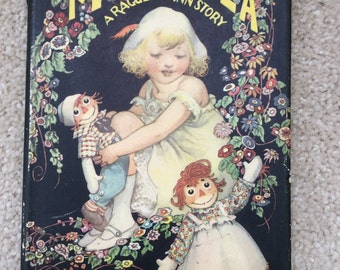

Gruelle won it, but died within weeks of the settlement. The ensuing lawsuit took four years to resolve. If the doll was that old, she reasoned, it must be in the public domain, so she began manufacturing Raggedy Ann dolls herself in 1934 without Gruelle's permission. It was not, as he wrote, found by Marcella in a barrel in her grandmother's attic.īut an entrepreneurial woman named Molly Goldman decided to take him at his word. He got himself into trouble by creating another legend in a prefatory letter to the first book of "Raggedy Ann Stories." Marcella's doll, he wrote, "was the same Raggedy Ann with which my mother played as a child." Of course, the first Raggedy Ann had been made in connection with the first book, sewn probably by Gruelle's sister Prudence.

Gruelle, who struggled to support his wife and daughter as well as his sister and brother, his parents and his in-laws, might agree. "History is one level of truth and art is another," said Gibson sagely, on hearing that the dying Marcella story was less than factual. The first appearance of the creature we think of as Raggedy Ann had come earlier, in 1910, but only in the background of a drawing of another Gruelle character, Mr. Johnny Gruelle had patented his doll - who did not look much like Raggedy Ann and did not bear that name - the year before, although his first book and dolls did not appear on the market until 1918.


But she was 14 then and long past being interested in fairy stories. Gruelle did have a daughter, Marcella, who died in 1916 of mysterious complications from a smallpox vaccination. It was that piece of information that seduced playwright William Gibson and became the germ of his new musical "Raggedy Ann, the Musical Adventure." Licensing agents for Raggedy Ann books and products have used the dying daughter story for well over half a century in their promotion material, and it has been printed as fact in numerous publications. It seems that Johnny Gruelle, the artist and illustrator who created her near the turn of the century, had a little girl who was dying, and he made up stories about her rag doll to entertain her as she lay in pain. By Washington Post Staff Writer August 24, 1986įor most of this century, children and adults alike have been touched by the sentimental story of Raggedy Ann, America's most famous rag doll, who is now about to hit the stage.


 0 kommentar(er)
0 kommentar(er)
